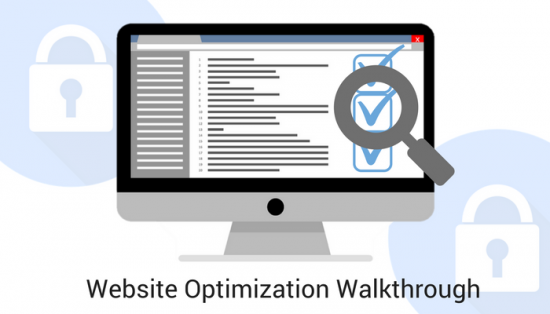
The idea of building a website for the first time can be daunting. Luckily there are various CMS out there that make it easy to get started. While having a responsive design is often necessary to attract potential visitors, because page load time is also now part of Google’s algorithm it’s important to make sure speed and security are top priorities. Luckily the two often go hand in hand, and there is no need to compromise between them.
We’ve compiled five tips that can maximize the performance, speed and security of your website:
1) Optimize your images and media files
Users expect content and images to be rendered automatically when they visit your site. When you are not optimizing the images, you are slowing down the time it takes to load these images when a user visits a page. Fortunately, there are several things you can do to optimize the images and other content on your site. Firstly, when you are uploading images use JPG file images as your default because they generally load faster as compared to PNG file types for example.Secondly, limit use of GIFs. Because images are directly hosted on your server, the larger the files you use, the more they contribute to a slower page load time. Also, do not scale images by changing width and height in HTML; instead resize the original image itself. Lastly, consider hosting your media on third-party services such as YouTube and Slideshare.
2) Switch from a shared to a dedicated web hosting provider
While creating your website under a shared hosting plan may seem cost-effective, you may end up losing more than you expected in the long run. Consider the fact that the web hosting provider may be hosting a website that has a multitude of active plugins, thereby clogging the server’s resources and making the overall speed lower. Every time your website is unavailable, you risk losing potential visitors (and future paying customers) to your website due to a low page load time. So, now those few extra bucks you thought were initially saving are actually costing you potential customers. As the saying goes, “you get what you paid for,” and in cases where speed is a priority, switching to a dedicated web hosting provider might make the best business sense.
3) Remove unnecessary redirections
If you are using SSL on parts of your site, avoid using redirects to migrate images or files as unnecessary redirections will ultimately slow down your site. For example, if you have a HTTPS site, let’s say https://www.yourwebsite.com, but then you have an image located at http:www.yourwebsite/com/image.jpg, then you’ll end up with an extra redirect from the http version to the https one created by the browser to load the image. Instead, there is a simple fix to to switch to HTTPS: when inserting images to your HTML code, use relative URLs files as opposed to absolute URLs so that your website is not bound to the original HTTP URL where the images or files are deployed. This will reduce the time it takes to load the images on your site.
4) Consider using CDN
The main purpose of using a CDN, or content delivery network, is to help server files load much faster. A CDN utilizes a cached version of your website’s content in multiple geographical locations to allow content to load more quickly. However, if the content on your website is relatively light then a CDN might not provide a tangible performance benefit. CDN also provides some protection against cyber attacks, specifically against DDoS attacks. However, the protection is limited because CDN causes fewer requests to be made to the server.
5) Implement a cloud WAF (Web Application Firewall)
Let’s say switching to a dedicated web hosting provider is not feasible due to budget limitations. Luckily there is a solution that can satisfy both your speed and security needs. Because your hosting provider is not responsible for your security, implementing a cloud WAF to also improve speed is an alternative. There is often a misconception that deploying a cloud WAF creates additional connection points prompting a slower or delayed response time. But the fact of the matter is that a WAF can actually help speed up websites. When spam bots and malicious agents are left unfiltered they can clog your website’s server resources, thus reducing the overall speed and performance of the site. When a WAF is in place, you can be assured that only legitimate traffic is coming through.
Final Thoughts
While every website is unique, these different web optimization techniques can make a huge difference when it comes to the performance and security of your website. From optimizing your images to removing unnecessary redirections to implementing a WAF, there are affordable ways to improve your website’s loading time and overall security. The tips we provided are by no means comprehensive so leave us a line below with any additional tips you may have!





